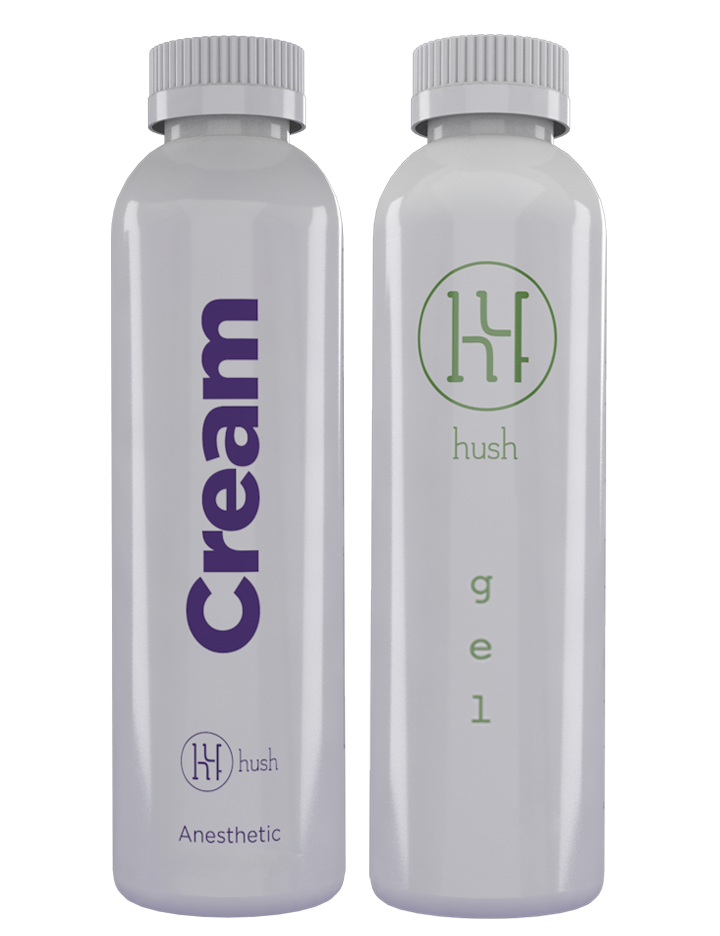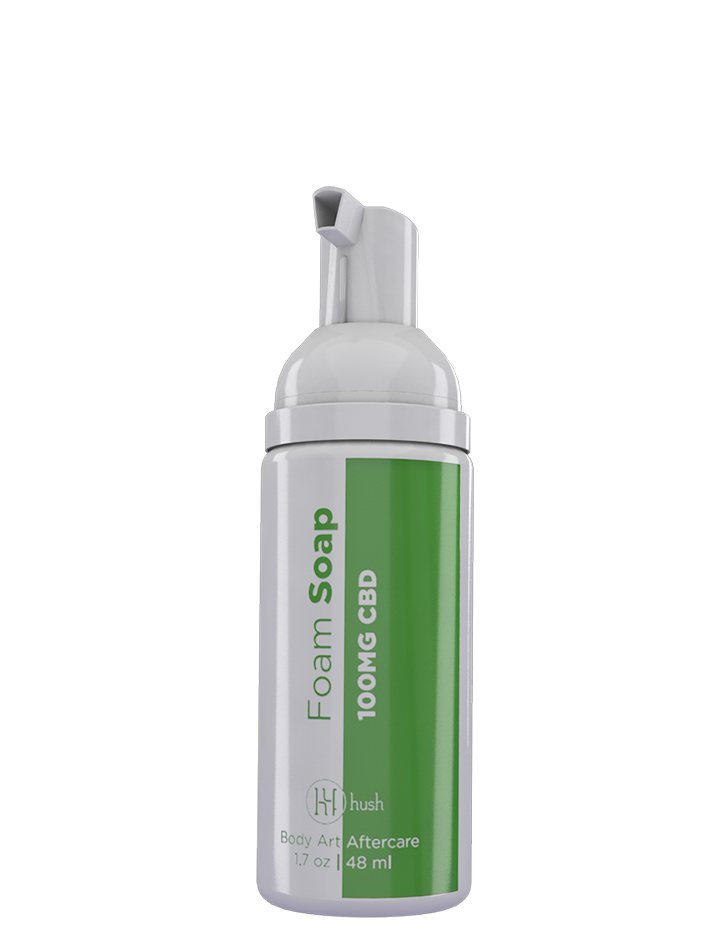Tattoos are open to interpretation. Many get a tattoo to commemorate a significant life event or to immortalize their connection to something important. Wave motifs in tattoos are quite common. Sometimes, they’re merely an aesthetic choice. In other cases, they hold a heavy amount of significance to the person who incorporated a wave onto the canvas of their body.
Here’s what you should know about wave tattoos and the greater meaning they may hold. When you’re ready to get inked, HUSH is ready to keep you calm and collected.
The History of Symbolism in Tattoo Art
Nowadays, most tattoos are just cool art. They don’t have to be that deep to be appreciated. Maybe you just really love a particular band or painter, and you’d like to carry around a little piece of them with you everywhere you go.
Historically, tattoo artists have been hard to come by. Before equipment became sterile, efficient, and electric, you had to search far and wide to find the right person to do the job. Getting a tattoo was a big deal, and it had to mean something important to be worth all the effort.
Tattoos have been used as part of important rites of passage or ceremonies. They were intended to indicate that someone was officially a part of something or had passed a significant milestone. All tattoos were born of symbolism and held a high level of importance.
Tattoo art remains tethered to symbolism. A bit of the historical meaning of tattoos survives and thrives through modern tattoo art when people choose to observe the traditional approach of obtaining body art.
What Is a Wave Tattoo?
A wave tattoo is exactly what it sounds like: a tattoo of ocean waves. Some wave tattoos are very direct in their interpretation.
You can take one glance at them and quickly imagine a surfer riding their crests. Other wave tattoos can be a little more abstract or minimalist in their approach. Aesthetics aside, wave tattoos are usually intended to represent the same idea.
The Origin of Waves in Traditional Japanese Tattoo Art
There are many symbols we associate with traditional Japanese tattoo art. Cherry blossoms, dragons, demon masks, and koi fish have always been an important part of Japanese tattoo imagery. Waves are almost equally as important, and are often incorporated alongside larger and more complex elements in larger traditional Japanese tattoo pieces.
Japan is an island. The ocean is heavily incorporated into the mythology and history that defines Japan. Waves are often used to give context to the story displayed in a tattoo.
Waves around a koi can symbolize the resilience of the koi as it struggles against the current on its journey. Waves surrounding a warrior can represent turmoil, chaos, or the unpredictable as the samurai works to fight his way through.
Japanese tattoo art depicts waves very distinctively. Rather than choppy, foamy crests, Japanese tattoo art utilizes broad, large swirls that symbolize the powerful force of a wave. The force of the water is depicted similarly to a gust of wind, and each is recognized as a similar symbol.
Different Approaches to Wave Tattoo Symbolism
Waves can mean a lot of things, and the interpretation can be highly specific to your life. There are many commonly accepted ways to interpret the symbolism of a wave. The meaning can be deeply cultural, representative of something you’ve endured, or a reflection of your life on or near the ocean.
A Love of Nature
Waves can represent a strong connection to nature. Waves and changing tides can symbolize the power of the earth. Waves can be destructive or productive.
They can erode sandcastles, but they can also spread sea life all over the world to grow, thrive, and learn. The power of the tide is the power of Mother Nature.
The Changing Phases of Life
When the state of your life is constantly changing or when you’re dealing with grief, you might use the phrase, “It comes in waves.” That’s because things rise and fall, washing away old phases of your life and ushering in new phases of your life. Feelings, emotions, and memories wash over you all the time.
Some people use waves as a way to symbolize that they’re dealing with their trauma or grief in stride — or even that they’ve healed from a tumultuous situation. Waves can mean that perseverance is the key to surviving and you have the will to persevere for as long as it takes.
Transformation
If you’ve been through a powerful transformation in your life, a wave can be a symbol of your growth and change. The ocean lays flat and still until the waves rush up.
The ocean becomes strong, powerful, and formidable. If you’re coming into a formidable phase of your life, a wave can symbolize that your changes have made you stronger. You’ve risen from your stillness and are ready to show the world what you’re made of.
A Cultural or Spiritual Reverence for the Sea
Some island cultures, like Polynesian or Maori tribes, believe the ocean has a supernatural, mystical power. Waves can be seen as a respect to the gods, spirits, or guides that govern the waters. Waves can be a way to carry the protection of the overseers of the ocean with you everywhere you go.
A Symbol of a Lifelong Commitment
Sailors, fishermen, and Navy service members often get nautical tattoos, like waves. For them, the ocean is a part of their identity.
They’ve spent a significant portion of their lives at sea, watching the tides roll in and out. Waves have carried them across the world from one leg of their journey to the next. Waves can symbolize their hard work and the movement of their lives.
The Sheer Love of Art
Tattoos often have symbolism, but symbolism isn’t a required part of the tattoo process. Don’t feel like you can’t get the tattoo you want because you don’t relate to its commonly accepted symbolism.
If you really love waves and the beach makes you happy, there are no rules. You’re allowed to get whatever tattoo you want. It only matters what your tattoo means to you; what it means to other people is irrelevant. Love the art you love and decorate your body however you choose.
Incorporating Waves Into a Larger Tattoo
Waves can be a valuable way to fill up negative space around or in between tattoos that fit the theme. Mermaids, sea life, gods or deities, and nature scenes blend well with waves. You can incorporate the symbolism of waves into your intended motif, or you can use them at face value. Sometimes, they’re just perfectly thematically suited to a tattoo.
Wave Tattoo Styles
There are several ways you can approach a wave tattoo. Stylization doesn’t necessarily impact the symbolism of the tattoo. You’re free to choose an aesthetic that fits with the art style of the rest of your tattoos or that reflects your personal artistic preferences. There’s no wrong way to design a wave. Just make sure you love it enough to keep it forever.
Minimalist
Lines in a wave shape send the message without making an overwhelming statement. Minimalist waves are excellent for people who prefer delicate, non-committal tattoos that are discreet or easy to hide. Minimalist waves can live in a hideaway spot, like between your fingers, behind your ear, or on the inside of your ankle.
Tribal
Tribal tattoos can be a little bit controversial, especially when they’re worn by someone who doesn’t have any sort of tribal affiliation. Native American and Maori tribes revere forces of nature like waves. If you’re paying homage to your ancestry, consider a tribal style wave band in a traditional thick black line style.
Photorealistic
Photorealistic tattoos are a big commitment. There are plenty of amazing artists who specialize in photorealism. It may take several sessions to achieve a photographic or cinematic quality tattoo of waves, and it will likely take up a lot of real estate on your body.
Highly Stylized
Waves can be stylized into different styles of tattoo art. Waves look great in American Traditional, Japanese Traditional, and new school art. If you’re down for something highly original, try a surrealist, impressionist, or even a halftone comic book style interpretation of waves.
Other Types of Waves in Tattoos
Most people think about the ocean when they think about waves, but your mind might go somewhere else depending on your experiences and passions. A sine wave, a sound wave, a .wav file, electromagnetic waves, or seismic waves also make great tattoos for people who can connect to them.
Electromagnetic and seismic waves can share some of the same symbolism as ocean waves. They represent the earth’s power. Sound waves and .wav file representations are excellent tattoos for audiophiles or musicians. Sine waves and other types of mathematical waves are great choices for mathematicians and scientists.
Waves are a metaphor that transcend topics and genres. There is no wrong way to use a wave, or no wrong wave to choose, to symbolize growth, transformation, growth, or change. It’s a versatile metaphor that carries through into so many areas of our lives.
Take Your Time With Your Design
Waves can be tricky to tattoo correctly, especially if you want them semi-realistic. Artists who do excellent cartoon-style tattoos or portrait tattoos may not always be the perfect people to tattoo something like a wave, a mountain, or a celestial scene.
Take your time finding the right artist for the job. Remember, your tattoo is going to be there forever. You can wait a few months to make sure you’ll love it for eternity.
Look for artists with multiple wave tattoos in their portfolios. Ask people with really cool wave tattoos who they went to. People with great tattoos often love their artists and are eager to reccommend them to others.
Have a consultation with an artist. Explain your design and the style you want. Be open to your artist’s feedback and suggestions.
Your artist’s experience gives them a better idea of how tattoos should be shaped to fit your anatomy, proper sizing and placement for certain tattoos, and which color palettes look best against certain skin tones.
You might want to compromise a little bit if an artist knows the best way to fulfill your vision. If an artist wants to make too many changes — enough to where you barely recognize your original idea — they’re probably not the right fit for you. Go back to the drawing board and check artists’ social media profiles until you find an artist who seems to be on the same wavelength as you (pun intended).
Is a Tattoo Gonna Hurt?
If you’re nervous about the tattoo process, don’t settle for something you don’t want. If your heart is calling out for a medium-sized realistic wave piece, don’t settle for minimalist linework just because you’re not too thrilled with the pain factor.
HUSH tattoo numbing cream makes it easy to sit through a long session. Slather it on about an hour before your appointment, wrap the area in plastic wrap, and leave it on until your artist is ready to prep the spot for your stencil. The numbing effects can last for a few hours, turning the “ouch” factor down to a dull roar.
Get the tattoo you love, and don’t worry about the discomfort. HUSH has you covered. Our tattoo aftercare kit can see you through the healing process, and our session bundle can get you ready for tattoos to come. You can never have just one.
Sources:
Skin Stories . History of Tattoo | PBS
Tattooing in Ancient Egypt | American Research Center in Egypt




